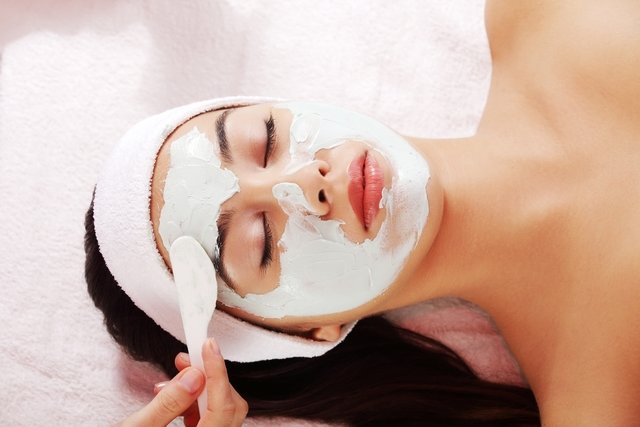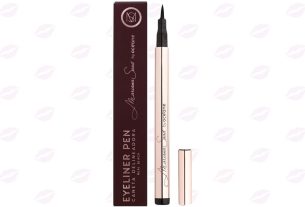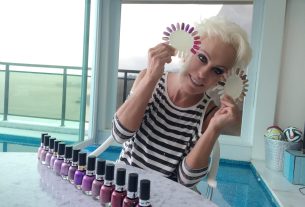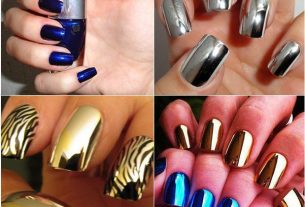Deep skin cleansing is recommended to remove blackheads, impurities, dead cells and milia from the skin, which is characterized by the appearance of small white or yellowish dots on the skin, especially on the face.
This deep cleansing of the skin can be done every 2 months, in the case of normal to dry skin, and once a month in combination to oily skin and with blackheads, helping not only to clean the skin, but also helps to stimulate the cell regeneration and leave the skin looking more beautiful and healthier.
Deep skin cleaning should be done in a beauty clinic by a beautician, in order to avoid the formation of scars or even skin infections, and lasts about 1 hour. However, it is also possible to carry out simpler skin cleaning at home. Check out the step-by-step instructions for cleaning your skin at home.
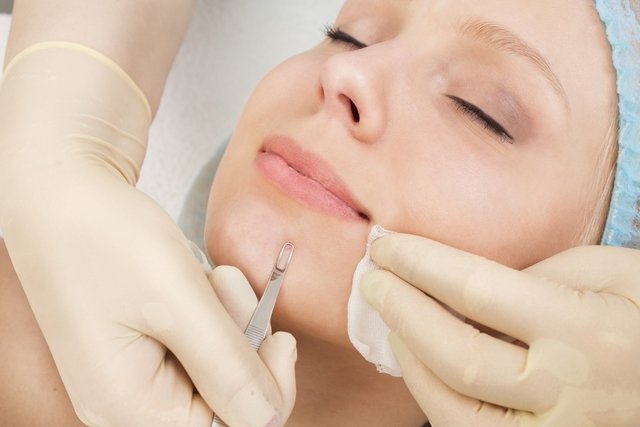
7 steps to deep skin cleansing
Deep skin cleaning must be done by a beautician and is generally done with the following steps:
1. Skin hygiene
Skin cleansing consists of removing makeup and cleaning the skin by applying a cleansing lotion to help remove oil and some impurities from the skin. Products with Aloe vera and green tea are great options for detoxifying the skin.
The lotion should be applied with a gloved hand to the entire face, and then you can use gauze to spread the product over the entire face, using circular movements.
2. Opening of pores
The opening of the pores is done through the application of ozone vapor or even water vapor, as the steam helps to soften the skin, facilitating the removal of blackheads and impurities. A mask can also be applied to further help soften the most superficial layer of skin.
The water or ozone vapor can last for 5 to 10 minutes and during this period the beautician can massage the hands or head of the person receiving the treatment, making the moment more pleasant and relaxing.
3. Exfoliation
Next, an exfoliation is performed to remove the most superficial layer of the skin and dead cells, facilitating the extraction of blackheads and impurities in the following step.
In people who have inflamed pimples, this exfoliation can only be done with a specific product, but in all other situations you can use an exfoliating cream that has microgranules that, pressed into the skin, help remove dirt.
Circular movements with gauze are essential to remove as many blackheads from your face as possible and open your pores. Complete removal of the product can be done with water and clean gauze, preparing the skin for the next step.
4. Blackhead extraction
Blackheads are extracted manually, using gauze or a small piece of cotton moistened with an antiseptic lotion, pressing the index fingers in the opposite direction.
Milium extraction must be done with the help of a microneedle, to pierce the skin and press, removing the little ball of sebum that has formed there. This procedure can take a maximum of 30 minutes and generally starts in the T-zone, in the following order: nose, chin, forehead and then cheeks.
After manual extraction of blackheads and milia, a high-frequency device can be applied to help the skin heal and soothe.
Furthermore, another way to do a good professional skin cleansing, removing as much impurities as possible, is to do an ultrasonic skin cleansing, which uses ultrasound equipment to reach the deepest layers of the skin.
5. Soothing mask
A mask, usually with a calming effect, depending on the skin type, should be applied for around 10 minutes to help reduce redness and calm the skin.
It can be removed with water and clean gauze, using circular movements. During its operation, manual lymphatic drainage can be performed on the entire face to help reduce redness and swelling.
6. Hydration
Hydration is done by applying a thin layer of moisturizing cream or serum according to your skin type. You can also apply an anti-aging cream to soothe and protect your skin, as well as keeping your face hydrated.
7. Applying sunscreen
To finish professional skin cleaning, a moisturizing lotion and sunscreen must be applied, always with a protection factor equal to or greater than 30 SPF.
This is because after deep skin cleansing, the skin becomes more sensitive than normal and, therefore, sunscreen is essential to protect the skin from sun damage and to prevent the appearance of dark spots, which may appear if exposed. in the sun or ultraviolet lights, for example.
Care after skin cleansing
After professional skin cleaning, it is necessary to take some care for at least 48 hours, such as not being exposed to the sun and not using too much makeup or acidic products and oily creams, for at least 1 or 2 days after cleaning, giving preference for calming and skin healing products.
Good options are thermal water and facial sunscreen to protect the skin from sunburn and to prevent the appearance of blemishes.
When not to do
Professional skin cleansing should not be done on acne-prone skin when there are inflamed pimples with a yellowish appearance, as it can aggravate acne and harm the skin. In this case, the best option is to go to the dermatologist for treatment, which can be done with ointments or medication to take. See the main treatments for acne.
Furthermore, professional skin cleaning should not be done on people with very sensitive skin, allergies, wounds, peeling or rosacea.
You should also not do deep cleansing when your skin is tanned because it can lead to dark spots on the skin.
People undergoing treatment with skin acids, such as peeling chemicals, or who use creams that contain acid should also not cleanse their skin due to increased skin sensitivity. The dermatologist will be able to tell you when you can go back to having your skin cleaned.
Skin cleansing can be done during pregnancy, but at this stage it is common for blemishes to appear on the skin, and therefore the beautician may choose to use different products or carry out a more superficial skin cleansing, so as not to harm the skin, avoiding appearance of dark spots on the face.

Sign up for our newsletter and stay up to date with exclusive news
that can transform your routine!
Warning: Undefined array key "title" in /home/storelat/public_html/wp-content/plugins/link-whisper-premium/templates/frontend/related-posts.php on line 12
Warning: Undefined array key "title_tag" in /home/storelat/public_html/wp-content/plugins/link-whisper-premium/templates/frontend/related-posts.php on line 13

